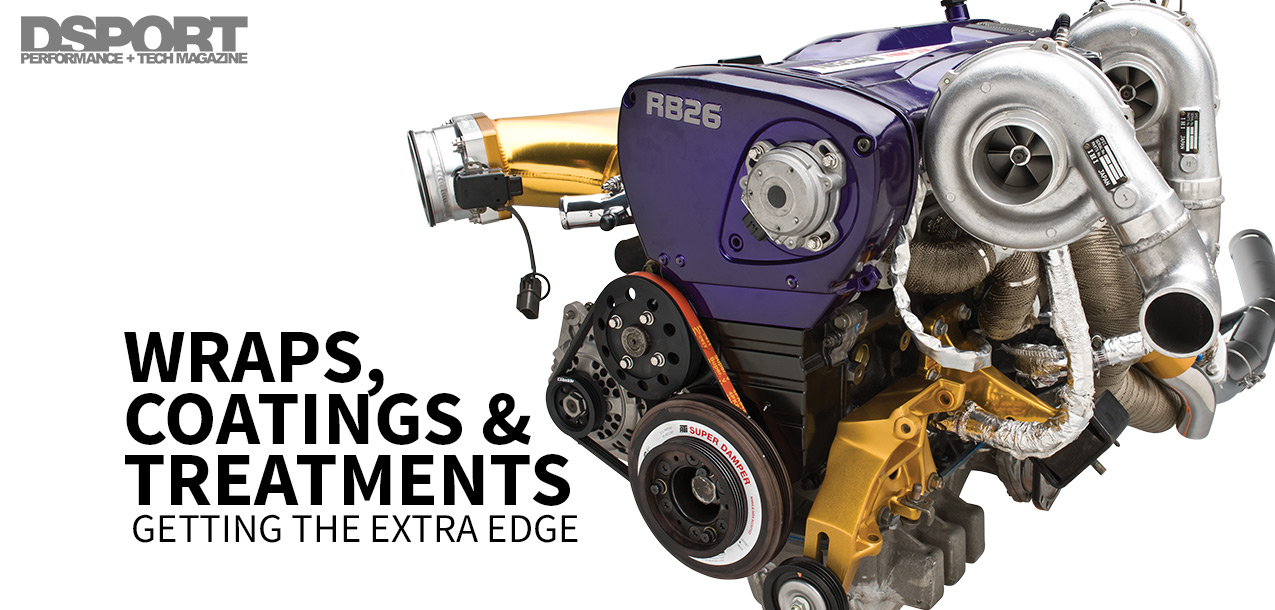Friction-reducing and anti-wear coatings
Usually friction-reducing and anti-wear coatings are a dry-film lubricant using a metallic anti-friction compound like molybdenum disulfide suspended in an organic-resin base. Molybdenum is slippery like graphite but harder and more pressure- and wear-resistant. The resin is usually a thermosetting type of plastic which has a high heat resistance. Some coating companies like Swain Tech and Embee Performance use tungsten disulfide in their piston skirt coatings to make the coating tougher, dimensionally stable and more wear- resistant.
The advantage of molybdenum and tungsten-based coatings is their ability to conduct heat. Much of the heat that a piston absorbs from combustion is conducted out of the piston through the rings and skirt in contact with the cylinder walls. Some coatings are Teflon based, which intuitively seems like a good idea because of Teflon’s noted slipperiness. [pullquote]UNFORTUNATELY, TEFLON IS ALSO A GOOD INSULATOR WHICH CAN KEEP HEAT IN THE PISTON. THIS IS NOT A DESIRABLE CHARACTERISTIC[/pullquote]Unfortunately, Teflon is also a good insulator which can keep heat in the piston. This is not a desirable characteristic. Teflon is a soft plastic that distorts and creeps under load, another undesirable characteristic when it comes to piston coatings.
Coatings can also be used to tighten up the piston-to-wall clearance of forged pistons. This reduces clatter and cylinder-wall wear without the risk of scuffing and seizing. Skirt coatings can also tighten the bore of a block that is on the “loose” side. This would be the case when one can’t or won’t re- bore the cylinders and needs to reuse some pistons. In this case a light honing of the bores is more than enough to freshen up a well-used motor, and the coating simply ensures tighter piston-to-wall clearances and provides a permanent lubricating effect. Tight-fitting pistons that are resistant to scuffing up or seizing in the bore help improve the ring seal and ring life as well.
 Treated bearings are less likely to fail due to stress and also benefit from reduced friction.
Treated bearings are less likely to fail due to stress and also benefit from reduced friction.
Moly-based friction-reducing coatings can be used on bearings and piston rings where they help protect the soft bearing material, reduce friction and tighten up clearances. Calico bearings are sold with this sort of coating pre- applied, but they also offer a service to apply the coating to any existing bearing. Ring coatings reduce groove wear, tighten up groove tolerances for better ring seal, reduce ring chatter and flutter and reduce ring welding and sticking. Swain Tech and Embee Performance make effective ring coatings of this style.
For hard surfaces that bear a high point-contact load like cam followers and wrist pins, DLC coatings are proving to be highly effective. DLC stands for diamond-like coating. DLC is vapor-deposited homogeneous, an extremely thin layer of carbon that is much like synthetic diamond in its slickness and hardness. Until recently, this material has been unobtainable but prices are dropping and there are a few places in North America where this process is available. It is still very expensive, but it is also highly effective in reducing friction and wear in these hard- to-treat places. Calico Coatings offers DLC coatings for motorsports enthusiasts with the need and budget.
 This exhaust turbine housing was coated to protect surrounding equipment and to keep heat inside the housing. This additional heat is converted to energy that promotes faster exhaust speeds.
This exhaust turbine housing was coated to protect surrounding equipment and to keep heat inside the housing. This additional heat is converted to energy that promotes faster exhaust speeds.


